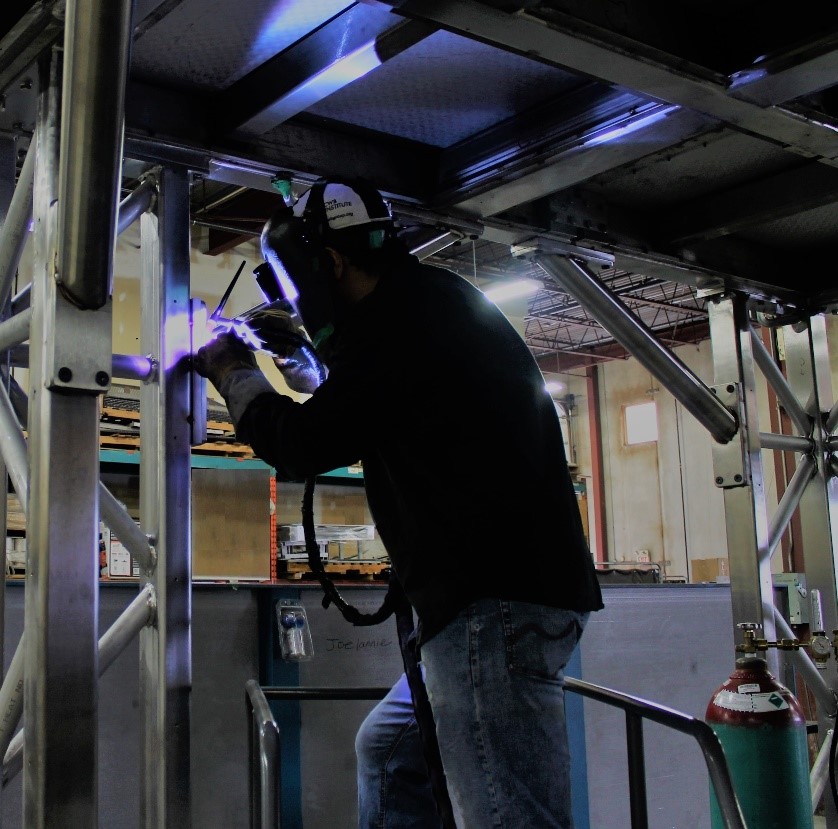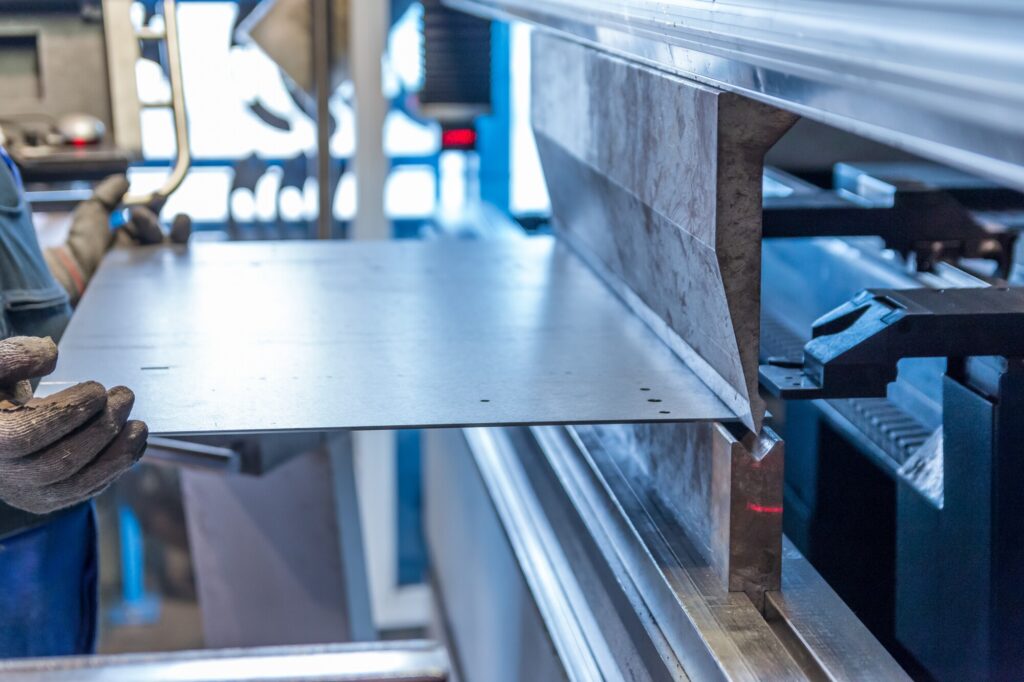Comprehensive Steel Fixing Solutions for Construction Projects
Comprehensive Steel Fixing Solutions for Construction Projects
Blog Article
Comprehensive Analysis of Cutting-Edge Techniques in Steel Construction Industry
As the steel manufacture market remains to progress, the assimilation of advanced strategies has come to be vital for staying competitive and meeting the needs of modern production criteria. From laser cutting advancements to the use of robotics and 3D printing in steel manufacturing, the landscape of construction techniques is swiftly changing. With each development bringing its own collection of benefits and obstacles, a detailed evaluation of these methods is critical for companies intending to streamline their processes, improve accuracy, and ultimately, raise the top quality of their steel manufacture output. In this vibrant sector where technology plays an essential duty, understanding the nuances of these sophisticated strategies is not simply a choice yet a necessity for those seeking to build in advance in the ever-evolving world of steel fabrication.
Laser Cutting Innovations
In the realm of steel manufacture, laser cutting developments have reinvented the precision and effectiveness of steel shaping procedures. By utilizing the power of focused laser beam of lights, producers can now achieve exceptional degrees of accuracy when puncturing numerous sorts of steels. This technology enables intricate designs to be implemented with minimal product waste, making it an economical option for markets needing high precision parts.
Among the essential benefits of laser cutting is its capability to deal with a wide variety of materials, including stainless-steel, light weight aluminum, and carbon steel, easily. The procedure creates clean, burr-free edges, eliminating the demand for extra finishing actions. Furthermore, the non-contact nature of laser cutting reduces the threat of material contamination, resulting in greater quality final product.
In addition, laser reducing devices can be set to make swift, specific cuts, dramatically decreasing manufacturing time contrasted to typical reducing methods. This rate and accuracy make laser reducing especially ideal for automation environments where effectiveness is paramount. As innovation remains to development, laser cutting is positioned to play an increasingly important function in the steel fabrication industry.

CNC Machining Innovations
The advancement of CNC machining technologies has ushered in a brand-new era of accuracy and performance in the steel fabrication sector. Computer Numerical Control (CNC) devices have changed steel construction by providing unmatched precision and repeatability in the production process. steel fixing. One of the crucial technologies in CNC machining is the assimilation of sophisticated software application systems that enable real-time surveillance and modifications, causing boosted productivity and quality assurance
Moreover, the advancement of multi-axis CNC makers has actually permitted the fabrication of intricate steel elements with detailed layouts that were previously challenging to produce. These machines can do a large range of machining operations, including milling, exploration, transforming, and grinding, all with high degrees of accuracy.
Additionally, the incorporation of automation and robotics in CNC machining has structured production processes, decreased preparations, and decreased the margin of mistake. This integration of cutting-edge modern technologies not only boosts performance yet additionally guarantees regular quality throughout all produced steel parts. In conclusion, CNC machining technologies continue to drive innovations in the steel fabrication industry, establishing new criteria for accuracy and efficiency.
Automated Welding Technologies
Automated welding innovations have actually reinvented the steel manufacture sector, improving efficiency and you can look here precision in the welding procedure. These sophisticated technologies make use of computer-controlled systems to automate the welding procedure, bring about greater productivity degrees and enhanced weld blog top quality. Among the essential advantages of automated welding is the capacity to do complex welds with consistent precision, lowering the likelihood of errors and rework.
Robotic welding systems are at the forefront of automated welding modern technologies, using unequaled speed and accuracy. These systems can handle a large range of welding jobs, from basic to elaborate, easily (Alpha reo). By making use of innovative sensing units and software program, robotic welders can adapt to variants in material and joint geometry, making sure an uniform and reputable weld
In addition, automated welding modern technologies enhance workplace safety and security by decreasing the exposure of human welders to hazardous fumes and extreme warmth. As the steel construction industry continues to develop, incorporating automated welding modern technologies will be necessary for firms aiming to remain competitive and satisfy the expanding needs for top quality bonded items.
Robotics Combination in Manufacture
Making use of robot systems in manufacture processes has actually come to be a pivotal technique for improving efficiency and accuracy in contemporary manufacturing atmospheres. Robotics integration in steel fabrication offers a myriad of advantages, consisting of increased efficiency, improved top quality control, and improved security actions. These innovative robot systems are furnished with advanced sensors and programming capacities, enabling them to execute elaborate jobs with a high degree of accuracy and repeatability.
Among the essential advantages of robotics assimilation in steel construction is the ability to automate repeated tasks, such as product handling, reducing, welding, and assembly procedures. This not just accelerates production cycles but also minimizes the danger of human error, causing greater general product high quality. Furthermore, robots can operate 24/7, dramatically increasing production outcome and meeting limited job deadlines.

3D Printing in Steel Production
Having actually reinvented the steel manufacture industry with robotics integration, the expanding expedition of 3D printing in steel production is poised to further development the realm of contemporary manufacturing techniques. 3D printing, additionally called additive production, provides unprecedented layout flexibility and intricacy, allowing the development of elaborate steel structures that were formerly unattainable through conventional production methods. By utilizing computer-aided style (CAD) software, producers can exactly control the layer-by-layer deposition of steel product, resulting in components with improved capabilities and geometries.
Among the essential advantages of 3D printing in steel production is its capability to minimize product waste substantially. Unlike subtractive manufacturing procedures where excess material is cut away, 3D printing only makes use of the needed amount of steel required for read here the final part. This effectiveness not only leads to set you back savings but additionally lines up with lasting production methods by reducing environmental impact.
Moreover, 3D printing enables rapid prototyping and personalization, permitting the production of little batches of complex steel elements with short lead times. As the technology remains to grow and become much more obtainable, its assimilation right into mainstream steel construction processes is anticipated to drive advancement and effectiveness throughout the sector.
Verdict
Finally, the steel construction market has actually seen considerable innovations in techniques such as laser cutting, CNC machining, automated welding, robotics integration, and 3D printing. These advanced innovations have reinvented the method steel items are made, bring about raised efficiency, accuracy, and cost-effectiveness. Continued investment in these cutting-edge methods is vital for the sector to remain affordable and satisfy the demands of modern production procedures.
As the steel construction market continues to evolve, the assimilation of sophisticated strategies has come to be important for staying affordable and satisfying the demands of modern production requirements.One of the essential advantages of laser cutting is its capability to handle a wide array of materials, consisting of stainless steel, light weight aluminum, and carbon steel, with ease.Automated welding technologies have actually transformed the steel fabrication sector, improving efficiency and accuracy in the welding process.Having actually reinvented the steel manufacture market through robotics assimilation, the blossoming exploration of 3D printing in steel manufacturing is positioned to further breakthrough the world of modern-day production methods.In verdict, the steel construction market has seen substantial advancements in methods such as laser cutting, CNC machining, automated welding, robotics integration, and 3D printing.
Report this page